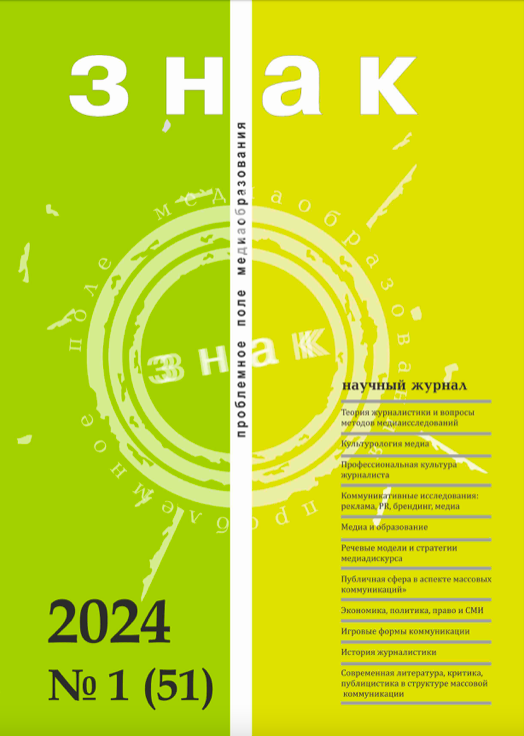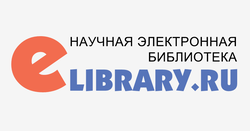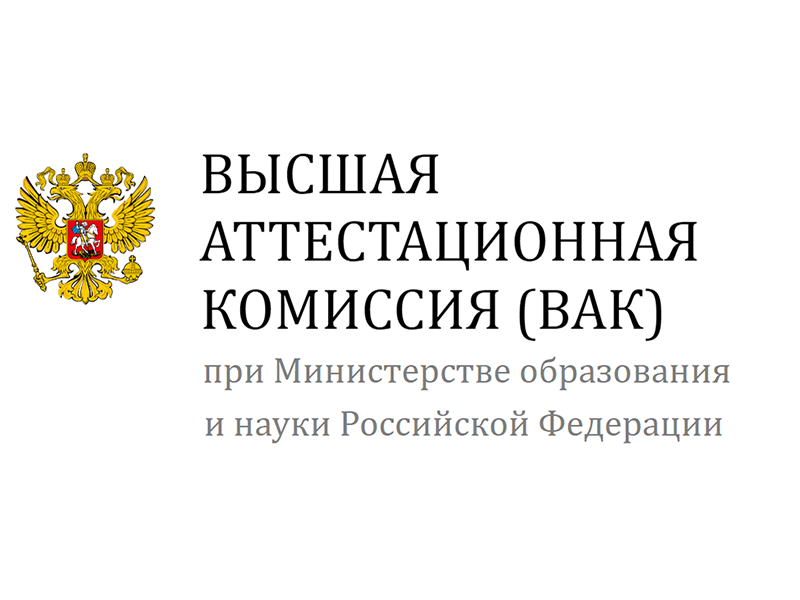Тематические доминанты алтайского медиатекста как инструмент конструирования локальной идентичности
DOI:
https://doi.org/10.47475/2070-0695-2024-51-1-6-11Ключевые слова:
локальная идентичность, медиатекст, тематические доминанты, медиатопик, АлтайАннотация
Взаимосвязь процессов медиатизации и глобализации оказывает прямое влияние на локальную идентичность, унифицируя ценности и обычаи, стирая границы между самобытностью, традициями и культурой народов. В этой связи обостряется проблема идентификации, индивидуализации и локализации этнокультур в медийном пространстве. В статье проанализированы научные источники по теме исследования, изучены подходы к формированию идентичности, проанализированы механизмы идентификации народов и культур. Одним из маркеров локальной идентичности автор рассматривает культурный код территории, отражающий ценностно-смысловой каркас локации, который приводит в действие процессы идентификации. Приобретая медиальную оболочку, культурный код транслируется в медиатекстах, объединенных общей тематической доминантой. Медийный текст рассматривается автором в качестве механизма формирования локальной идентичности, который запускается в процессе трансляции системы регулярно воспроизводимых тематических доминант. Тематические доминанты алтайских медиатекстов рассмотрены в качестве инструмента формирования идентичности локальной культуры. Эмпирической базой исследования выступили медиатексты алтайских интернет-СМИ, посвященные культуросфере региона. Выборка составляет 1061 медиатекст за 2021 г. В ходе исследования были определены три устойчивые тематические доминанты алтайского медиаполя, отражающие культурную специфику и конструирующие интерес к культурному коду в сознании потребителей медиа. Базовые медиатопики формируют интертекстуальные связи друг с другом путем пересечения фрагментов медиатекстов, их вариативности и сочетаемости. Консолидация тематических доминант усиливает процесс формирования локальной идентичности. Множественные тематические связи усиливают репрезентацию культурных кодов, коррелируя процесс формирования алтайской локальной идентичности в медийном пространстве.
Библиографические ссылки
Gromova, O. M. (2023). Kul'turnoe nasledie i narodnoe tvorchestvo kak pamyat' mesta i simvolicheskiy kapital regiona [Cultural heritage and folk art as the memory of the place and the symbolic capital of the region]. Chelyabinskij gumanitarij, 1 (62). 25–31. (In Russ.).
Dzyakovich, E. V. (2010). Identichnost', identifikatsiya, instsenirovka v razvitii global'nykh i lokal'nykh sotsiokul'turnykh protsessov sovremennosti [Identity, identification, staging in the development of global and local socio-cultural processes of modernity]. Observatoriya kul'tury, 4, 10–14. (In Russ.).
Dobrosklonskaya, T. G. (2008). Medialingvistika: sistemnyy podkhod k izucheniyu yazyka SMI [Media Linguistics: a systematic approach to learning the language of the media]. Moscow : MGU, 203 p. (In Russ.).
Zamyatina, N. Yu. (2016). «Zemlya nasha dala miru…»: Natsional'nye osobennosti brendinga territoriy ["Our land has given the world...": National peculiarities of the branding of territories]. Simvolicheskaya politika: sbornik nauchnykh trudov, 106–134. (In Russ.).
Zubanova, L. B. (2023). Memorial'naya identichnost': mezhdu mestom pamyati i pamyat'yu mest [Memorial identity: between the place of remembrance and the memory of places]. Chelyabinskij gumanitarij, 1 (62), 32–38. (In Russ.).
Kalmykov, A. A. (2018). Bessoznatel'noe mediirovannoy real'nosti [The unconscious of mediated reality]. Nauchnye trudy Moskovskogo gumanitarnogo universiteta, 3, 87–98. (In Russ.).
Kassirer, E. (1998). Opyt o cheloveke. Vvedenie v filosofiyu chelovecheskoy kul'tury [An experience about a person. Introduction to the Philosophy of Human Culture]. Problema cheloveka v zapadnoy filosofii, 784 p. (In Russ.).
Luman, N. (1981). Real'nost' massmedia [The reality of mass media]. Uchenye zapiski Tavricheskogo natsional'nogo universiteta im. V. I. Vernadskogo. Seriya: Filologiya. Sotsial'nye kommunikatsii, 2, 3–6. (In Russ.).
Maklyuen, M. (2005). Galaktika Gutenberga : stanovlenie cheloveka pechatayushchego [The Gutenberg Galaxy : The Formation of a Human Printer]. Moscow : Academic project : Mir Foundation, 495 p. (In Russ.).
Matuzkova, E. P. (2014). Kul'turnaya identichnost': k opredeleniyu ponyatiya [Cultural identity: towards the definition of the concept]. Vestnik Baltiyskogo federal'nogo universiteta im. I. Kanta. Seriya: Filologiya, pedagogika, psikhologiya, 2, 62–68. (In Russ.).
Negryshev, A. A. (2013). Nekotorye problemy teorii teksta v perspektive diskurs-analiza [Some problems of text theory in the perspective of discourse analysis]. Filologicheskie nauki. Voprosy teorii i praktiki, 149–151. (In Russ.).
Safonov, A. V. & Topchii, I. V. (2023). Sistema obrazov memorativnogo landshafta arkheologicheskogo pamyatnika Arkaim kak faktor ego populyarizatsii [The system of images of the memorial landscape of the Arkaim archaeological monument as a factor in its popularization]. Znak: problemnoe pole mediaobrazovanija, 4 (50), 102–111. (In Russ.).
Fedotova, N. G. (2018). Simvolicheskiy kapital mesta: ponyatie, osobennosti nakopleniya, metodiki issledovaniya [Symbolic capital of a place: the concept, features of accumulation, research methods]. Vestnik Tomskogo gosudarstvennogo universiteta. Kul'turologiya i iskusstvovedenie, 141–155. (In Russ.).
Frankl, V. (1990). Chelovek v poiskakh smysla: sbornik [A man in search of meaning: a collection]. Moscow : Progress, 226 p. (In Russ.).
Khalina, N. V., Pivkina, N. N. & Zherebnenko, A. V. (2020). Semantizatsiya simvolicheskogo kapitala Altaya v nauchnykh tekstakh (na materiale publikatsiy I Mezhdunarodnogo foruma «Altayskiy frontir V.M. Shukshina: nravstvennost', vital'nost', yazykovoy uklad» [Semantics of the symbolic capital of Altai in scientific texts (based on the publications of the I International Forum "Altai Frontier V. M. Shukshin: morality, vitality, language structure"]. Mir nauki, kul'tury, obrazovaniya, 1 (80), 391–393. (In Russ.).
Thompson, J. (1993). Social theory and the media. Communication Theory Today. London: Sage, 27–49.
Загрузки
Опубликован
Как цитировать
Выпуск
Раздел
Лицензия
Copyright (c) 2024 Знак: проблемное поле медиаобразования

Это произведение доступно по лицензии Creative Commons «Attribution-NonCommercial-NoDerivatives» («Атрибуция — Некоммерческое использование — Без производных произведений») 4.0 Всемирная.




